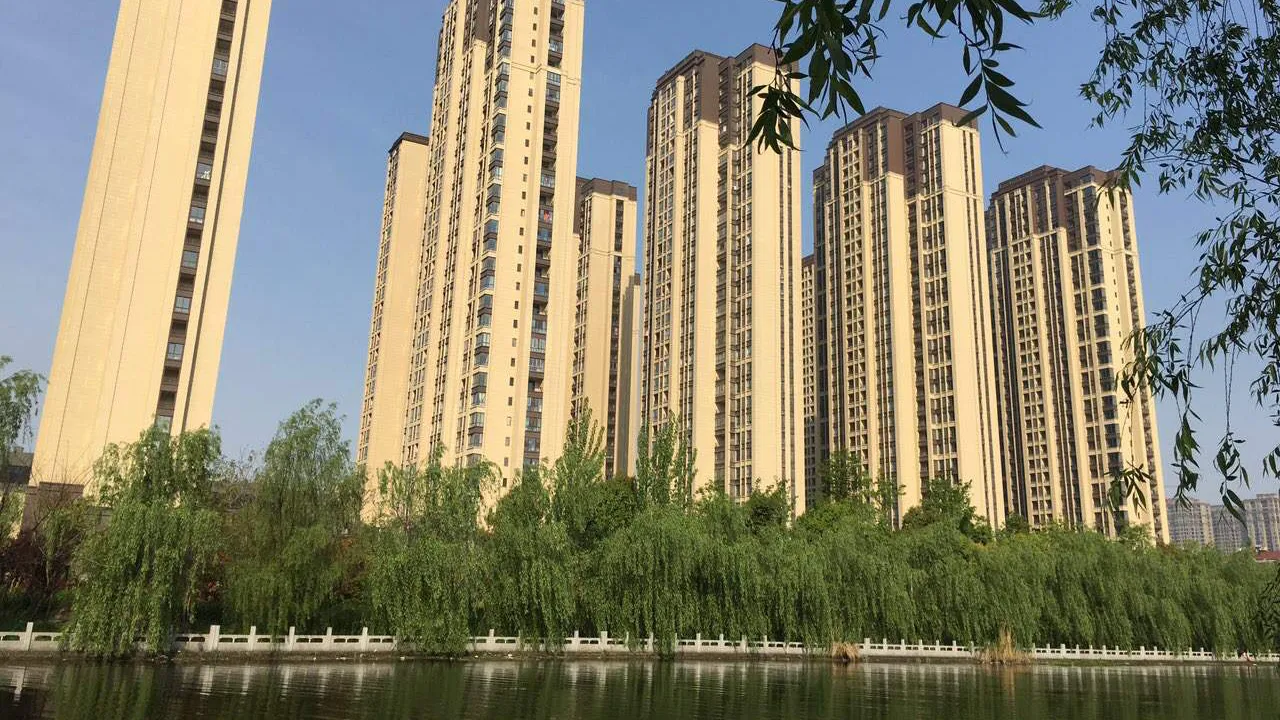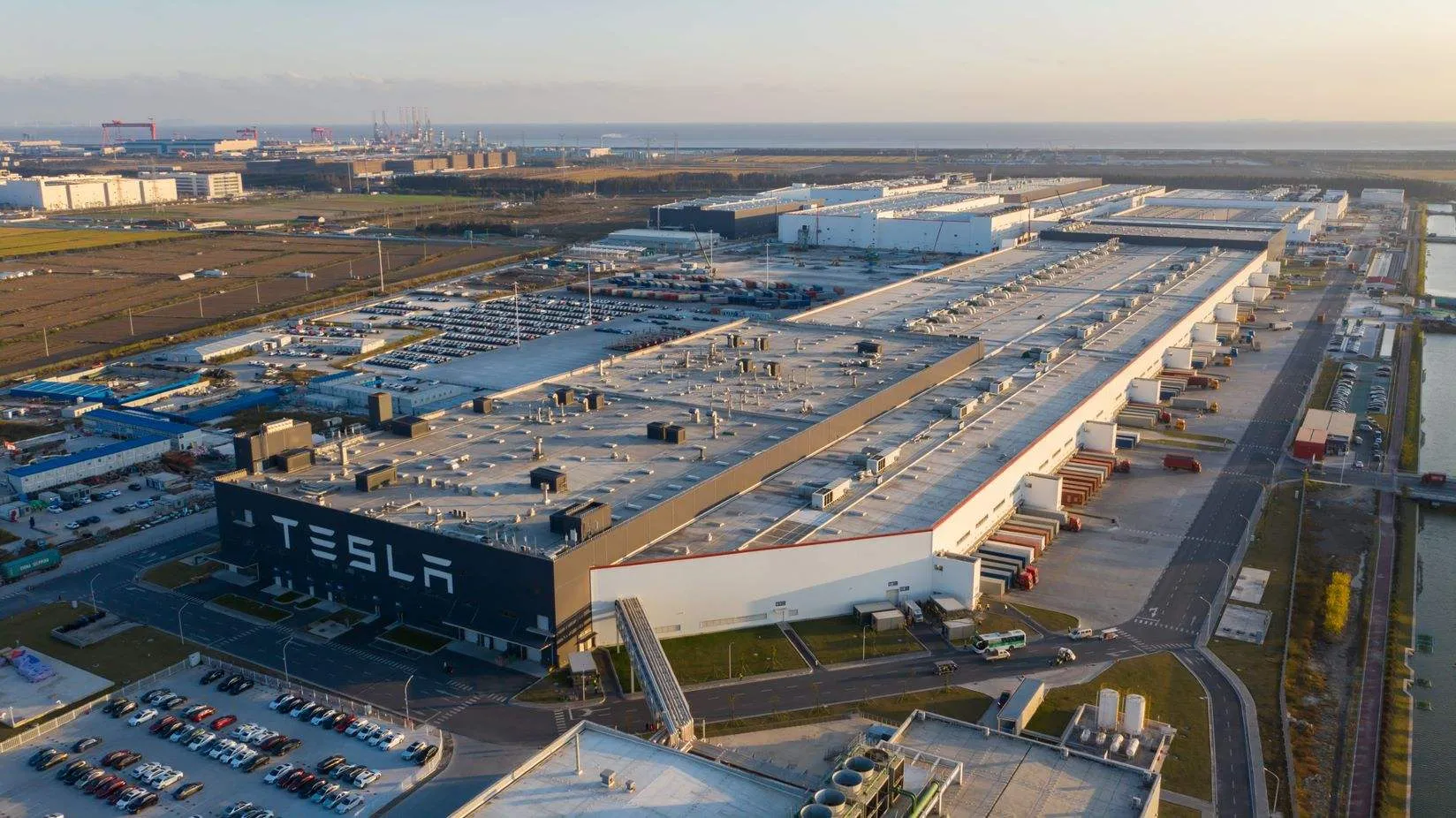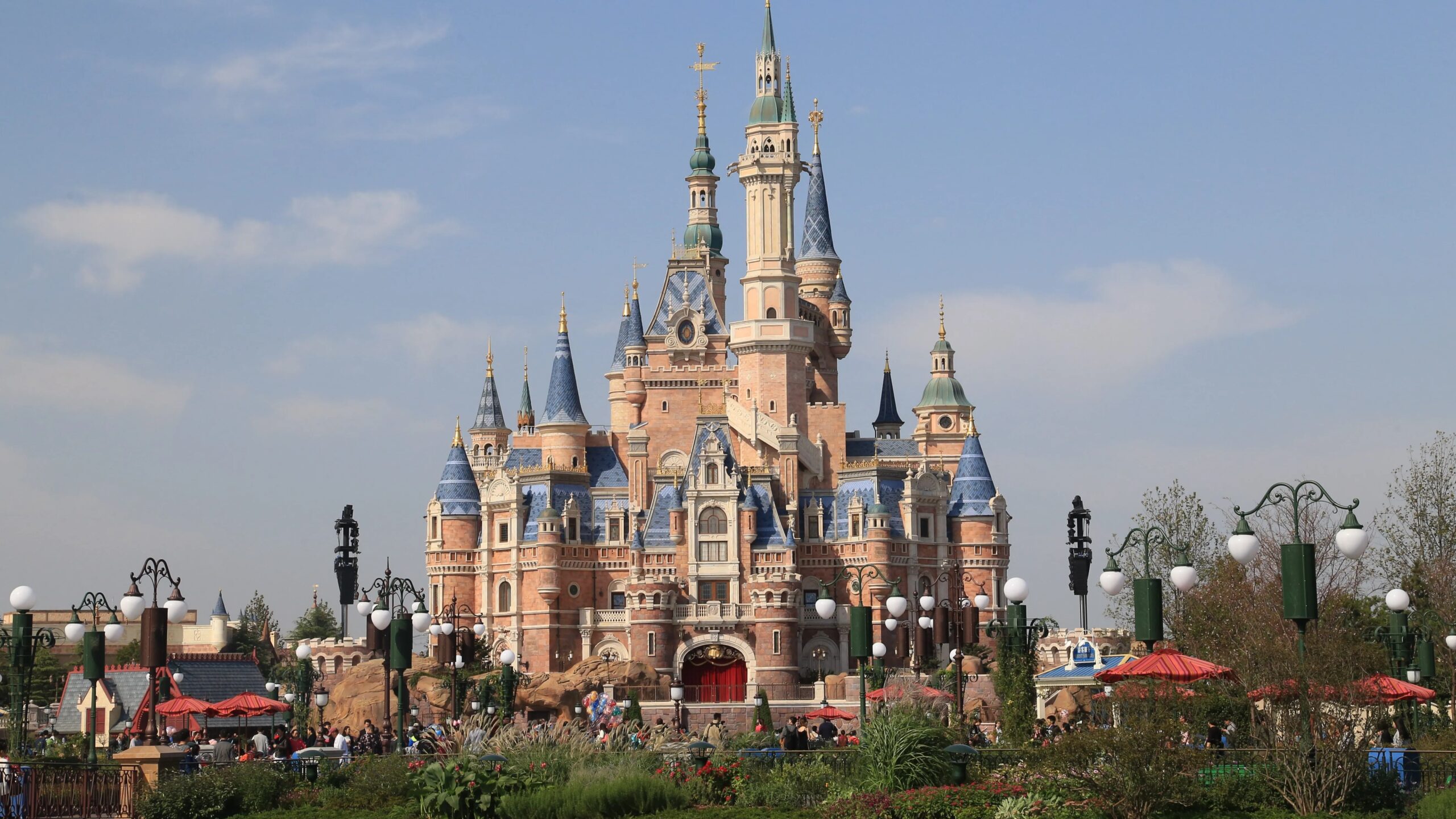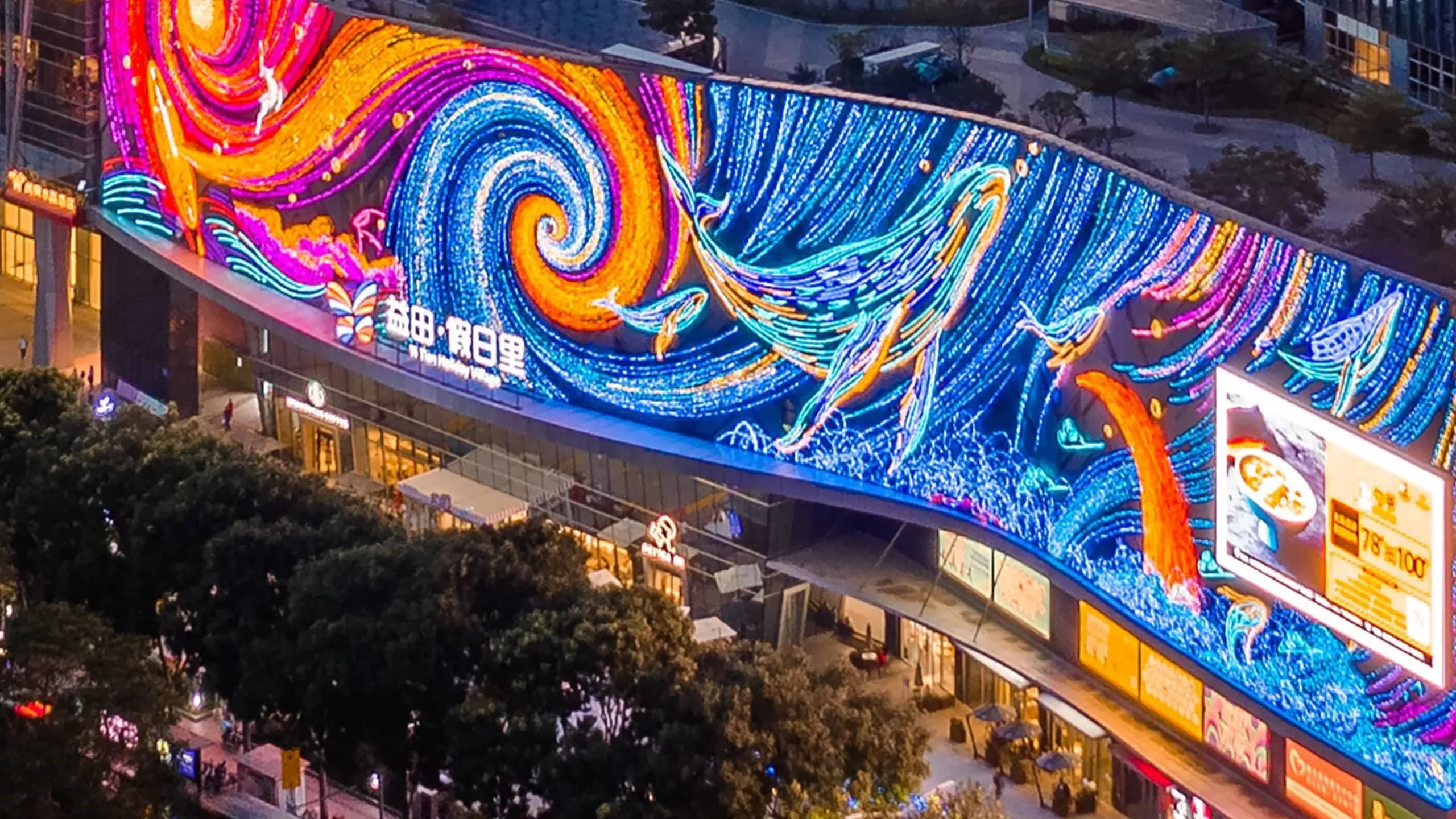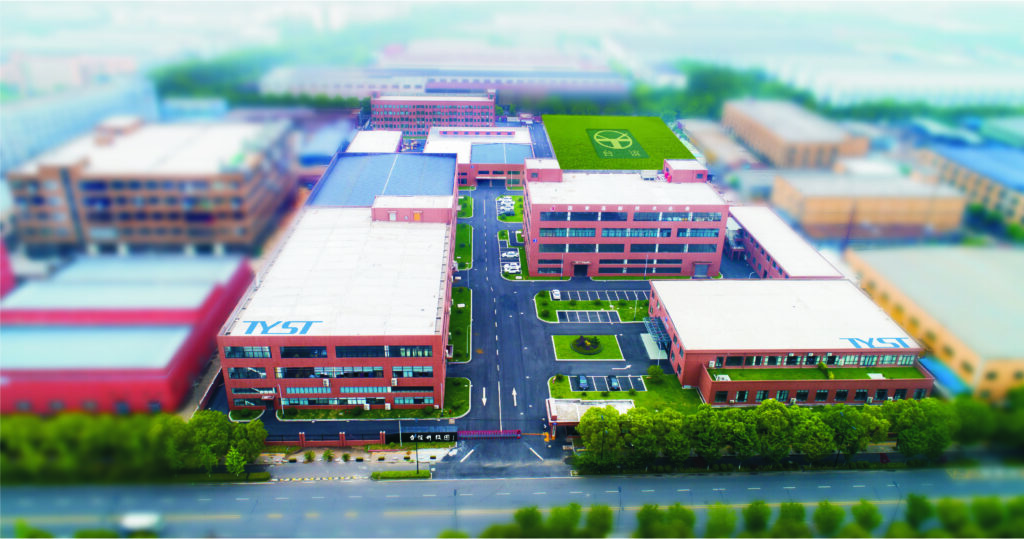
Transportation hubs face constant safety challenges due to high occupancy, complex layouts, and evolving fire risks. Recent data shows nearly 70% of commercial buildings built before 2000 lack a modern fire alarm system. Regulatory bodies and insurance providers now push for intelligent fire detection solutions.
| Aspect | Data | Implication |
|---|---|---|
| Fire Incident Statistics | 70% of older buildings lack modern fire alarm systems | High vulnerability in transportation hubs |
| Sensor Technology | Multi-criteria sensors reduce false alarms | Crucial for safety and operations in busy hubs |
Tyee delivers innovative fire alarm system and emergency lighting solution for comprehensive safety in transportation environments.
Key Takeaways
- Modern fire alarm systems use smart sensors and AI to detect fires quickly and reduce false alarms in busy transportation hubs.
- Multi-sensor detectors improve accuracy by combining smoke, heat, and gas detection, helping prevent costly false alarms.
- Integrated fire detection systems connect alarms, emergency lighting, and evacuation guidance for faster, safer emergency responses.
- Dynamic evacuation guidance adapts exit routes in real time, helping people find safe paths quickly during fires.
- Regular professional assessments, testing, and maintenance keep fire alarm systems reliable and compliant with safety standards.
- Fire safety solutions must address unique challenges like high occupancy, complex layouts, and harsh conditions in airports and railways.
- Leading brands like tyee provide advanced, tested fire alarm and emergency lighting systems designed for transportation environments.
- Training staff and conducting drills ensure everyone knows how to respond effectively during fire emergencies.
Fire Alarm System Solutions for Transportation Hubs

Transportation hubs demand robust fire alarm systems due to their high occupancy, complex layouts, and constant movement of people. Airports, railways, and transit centers face unique risks that require advanced detection and rapid response. Modern fire alarm systems use smart sensors, IoT connectivity, and AI to improve detection accuracy and reduce false alarms. These systems adapt to changing environments and support efficient evacuation, making them essential for public safety.
Tyee stands out as a trusted provider of innovative fire safety solutions. With over 32 years of experience, tyee offers a comprehensive product range, including the TY2001 Automatic Fire Alarm System. This system uses multi-sensor detection and intelligent algorithms to ensure reliable fire detection and fast response. Tyee’s solutions support centralized monitoring, remote diagnostics, and seamless integration with emergency lighting and evacuation guidance systems.
Airports
Airports operate around the clock and handle thousands of passengers daily. The risk of fire in such environments can disrupt operations and endanger lives. Advanced fire alarm systems in airports must detect smoke, heat, and gas quickly, even in large open spaces or behind walls. Tyee’s TY2001 Automatic Fire Alarm System uses multi-criteria sensors and distributed intelligence to monitor terminals, baggage areas, and control rooms. The system processes fire alarm signals in under three seconds, ensuring rapid alerts and minimizing false alarms.
Note: Modern fire alarm systems in airports offer remote monitoring and diagnostics. Maintenance teams can identify and resolve issues quickly, keeping the system reliable and compliant with safety regulations.
Airports also benefit from integrated emergency lighting and evacuation indication systems. Tyee’s solutions provide dynamic evacuation guidance, helping passengers and staff find safe exits during emergencies. The system adapts evacuation routes based on real-time fire data, reducing confusion and speeding up evacuation.
Railways
Railway stations and trains present unique fire safety challenges. Vibrations, temperature changes, and dust can affect traditional fire alarm systems. Modern solutions use compact, modular designs and advanced sensors to withstand these harsh conditions. Tyee’s fire alarm system supports real-time monitoring and rapid detection, protecting platforms, tunnels, and rolling stock.
Recent case studies show the success of advanced fire detection systems in railway environments. For example, the ADELIE system uses AI and image processing to detect fires in real time, providing early warnings and enabling efficient emergency response. This technology has protected high-speed trains like Alstom’s Acela Liberty and Eurostar, safeguarding assets and ensuring passenger safety.
| Aspect | Details |
|---|---|
| Industry Focus | Rail transportation, including freight and passenger trains, high-speed and commuter trains. |
| Fire Risk Areas | Electric drives, engine compartments, control cabinets, cylinder heads, oil filters. |
| Challenges | Vibrations, temperature changes, dusty conditions in rail environments. |
| System Installed On | Alstom’s Acela Liberty, Eurostar High-Speed Train. |
| Benefits | Safeguards assets, reduces disruptions, ensures personnel safety. |
Tyee’s solutions address these challenges with robust fire alarm systems that deliver reliable performance in demanding railway settings.
Transit Centers
Transit centers connect multiple modes of transportation and serve as busy transfer points for commuters. These hubs require fire alarm systems that can cover large areas and adapt to changing layouts. Tyee’s TY2001 system uses multi-sensor arrays and intelligent algorithms to detect fire quickly and accurately, even in crowded or complex spaces.
Modern fire alarm systems in transit centers integrate with building management systems. This integration accelerates evacuation and supports firefighting efforts. Tyee’s emergency lighting and evacuation indication systems provide centralized control and real-time guidance, ensuring safe and orderly evacuation during incidents.
- Key features of advanced fire alarm systems in transit centers:
- Multi-sensor detection for smoke, heat, and gas.
- Real-time monitoring and remote diagnostics.
- Dynamic evacuation guidance based on fire location.
- Scalable design to fit expanding or changing layouts.
Tyee’s expertise and innovative solutions help transit centers maintain safety, minimize disruptions, and protect lives.
Fire Detection and Alarm Systems: Key Features
Modern fire detection and alarm systems play a critical role in safeguarding transportation hubs. These systems combine advanced technologies to deliver rapid alerts, minimize false alarms, and support efficient evacuation. The following features set apart the most effective fire detection solutions in airports, railways, and transit centers.
Early Warning Technologies
Early warning technologies form the backbone of intelligent fire detection solutions. These systems use advanced sensors and algorithms to identify fire hazards before they escalate. Early detection allows staff to act quickly, reducing property damage and saving lives. In many cases, early fire detection systems can sense hazardous gases at concentrations as low as 1%, well below dangerous thresholds. This capability enables timely warnings and immediate evacuation.
Recent studies show that advanced early warning systems can detect fires within 8 seconds, much faster than traditional detectors. These systems use computer vision, machine learning, and video verification to distinguish real fire threats from harmless environmental changes. For example, a computer vision-based model achieved a recall of 0.97 and detected fires up to 307 seconds earlier than standard smoke detectors. Such rapid response can prevent millions in property damage and avoid loss of life.
Regular maintenance and sensor calibration further enhance reliability. Predictive maintenance models, which analyze sensor data over time, help reduce false alarms and ensure the system remains ready for emergencies. Customizable verification protocols and human-in-the-loop decision-making add another layer of accuracy, minimizing nuisance alarms and improving overall system performance.
Multi-Sensor Detection
Multi-sensor detection represents a significant advancement in fire and smoke detection. Traditional single-sensor smoke detectors often struggle in complex environments, leading to false alarms or missed incidents. Multi-sensor detectors combine smoke, heat, carbon monoxide, and even CO2 sensors to confirm the presence of fire through multiple indicators.
- False alarm rates in single-sensor systems can reach 97%. Multi-sensor systems dramatically reduce these rates by cross-verifying data from different sources.
- These detectors use chemical, heat, and particle analysis to improve accuracy.
- Data fusion from multiple sensors increases detection reliability and enables precise localization of fire sources.
The TY2001 Automatic Fire Alarm System from tyee leverages these technologies. It uses multi-criteria analysis and distributed intelligence to adapt to environmental changes, suppress interference, and process fire alarm signals in under three seconds. The system’s fuzzy intelligent algorithms further reduce false alarms, ensuring only genuine threats trigger alerts.
Key performance indicators for multi-sensor detection include detection accuracy, response speed, and continuous monitoring. Addressable fire alarm control units pinpoint the exact location of a fire, allowing for targeted response. These features are essential in busy transportation hubs, where rapid and reliable detection can make the difference between a minor incident and a major disaster.
System Integration
System integration enhances the effectiveness of fire detection and alarm systems by connecting various components into a unified platform. Integrated systems combine smoke detectors, heat sensors, cameras, and control panels, all managed through centralized software. This approach enables real-time monitoring, automated alerts, and seamless coordination with emergency lighting and evacuation guidance.
- Integration of wireless sensor networks with CO2, CO, temperature, and smoke sensors accelerates environmental perception.
- Edge computing improves data transmission speed and allows local preprocessing for faster detection.
- Real-time data analysis identifies fire patterns and tracks the spread of smoke, supporting quick and informed decision-making.
The TY2001 system supports networking with up to 64 controllers, allowing for comprehensive coverage across large facilities. Centralized control panels display smoke and temperature data, while mobile alerts notify responsible personnel instantly. In subway tunnels and transit centers, integrated fire detection solutions use advanced algorithms to localize fire sources even in windy or challenging conditions.
Machine learning models trained on multi-sensor data further improve detection accuracy and enable automated responses. Aspirating smoke detectors, which are hundreds of times more sensitive than traditional models, provide early detection in complex environments. These integrated systems ensure that transportation hubs remain safe, compliant, and prepared for any emergency.
Tip: Integrated fire detection and alarm systems not only improve safety but also streamline maintenance and compliance, reducing operational costs over time.
Emergency Lighting and Evacuation Indication

Safe evacuation during a fire depends on more than alarms. Emergency lighting and clear evacuation signs guide people to safety, even in smoke-filled or dark conditions. Transportation hubs, with their large crowds and complex layouts, need reliable systems that adapt to changing situations.
Dynamic Evacuation Guidance
Dynamic evacuation guidance uses real-time data to direct people away from danger. Instead of static exit signs, these systems adjust routes based on the fire’s location and conditions. Research shows that active, adaptive signage and voice instructions help people move faster and make better decisions during emergencies. For example, studies found that dynamic signs can reduce evacuation times in full-scale trials. Staff guidance and voice alarms also improve response times compared to alarms alone. New technologies, such as smart sensors and virtual reality training, help people remember evacuation procedures and respond quickly when it matters most.
Note: Dynamic evacuation guidance systems use smart technology to provide tailored instructions, reducing confusion and speeding up safe egress.
| Study / Metric | Quantitative Performance Figure | Impact on Evacuation |
|---|---|---|
| Boyce (1985) | Illuminance levels directly affect movement speed under emergency lighting | Higher illuminance improves evacuation speed |
| Fuji et al. (2021) | Lit emergency signs increase walking speeds in smoky corridors | Enhanced visibility reduces evacuation time |
| Galea et al. (2015, 2017) | Active dynamic signage systems reduce evacuation times in full-scale trials | Dynamic signs significantly improve evacuation efficiency |
Centralized Control and Monitoring
Centralized control systems play a vital role in large transportation hubs. They allow operators to monitor all emergency lighting and evacuation signs from one platform. This setup enables immediate detection of faults and quick responses to incidents. Centralized dashboards give a complete view of the situation, helping staff make fast, informed decisions. Real-time monitoring also means that operators can adjust evacuation routes as conditions change, improving safety for everyone.
| Benefit Category | Description |
|---|---|
| Real-time Monitoring | Centralized control enables immediate detection and response to incidents, improving emergency management. |
| Quicker Incident Response | Integration allows faster reaction times by security personnel through unified alerts and live video feeds. |
| Improved Occupant Safety | Automated emergency actions (e.g., lockouts, emergency lighting) help prevent life-threatening situations. |
| Unified Situational Awareness | Centralized dashboards provide holistic views of security, occupant well-being, and environmental factors. |
Centralized systems also support remote monitoring, which lets safety teams oversee multiple sites or large areas without being on-site. This approach streamlines resource management and reduces maintenance costs.
tyee Emergency Lighting System
Tyee’s Emergency Lighting and Evacuation Indication System stands out for its advanced features. The system uses adaptive dynamic guidance, changing evacuation routes based on real-time fire data. High-brightness LED signs and lights ensure visibility, even in smoke or darkness. Centralized management allows for 24-hour monitoring of all equipment, with instant alerts for any faults. The system’s design supports both automatic and manual switching to emergency mode, giving operators flexibility during incidents.
Tyee’s solution uses a two-bus network structure for reliable communication and fast response. The system’s graphical display makes it easy for staff to monitor and control evacuation routes. High-quality materials and energy-efficient LEDs provide long-lasting performance. Tyee’s emergency lighting system has proven effective in busy transportation hubs, helping thousands of people evacuate safely during drills and real incidents.
Addressing Unique Fire Risks in Airports and Railways
High Occupancy Areas
Airports and railway stations often hold thousands of people at once. High occupancy increases the risk of fire spreading quickly and makes evacuation more difficult. Proper protection in these environments depends on advanced detection and ventilation systems. Researchers have studied airflow, CO2, and aerosol movement in crowded airport terminals. Their findings show that the right ventilation mode can lower the risk of smoke and harmful gases:
- Numerical tests in airport departure halls measured how smoke and CO2 spread.
- Up-supply and down-return ventilation on the same side reduced aerosol diffusion, lowering exposure risk.
- Up-supply and down-return on different sides improved CO2 removal and thermal comfort.
- These results highlight the need for careful ventilation design to protect people in crowded spaces.
Smoke detectors play a vital role in these areas. They must respond quickly to smoke and fire, even when many people move through the space. Reliable detection ensures early warning and supports safe evacuation.
Complex Layouts
Transportation hubs like airports and metro stations have complex layouts with many corridors, exits, and levels. These designs create unique challenges for fire protection and evacuation. Empirical studies use simulations to understand how people move during emergencies. Key findings include:
- Bottlenecks often form at exits, slowing evacuation.
- The number, width, and placement of exits affect how fast people can leave.
- Pedestrian behavior, such as age and crowd density, changes evacuation speed.
- Simulation models help plan the best routes for safe evacuation, considering smoke movement and fire location.
Smoke detectors must cover every area, including hidden spaces and tunnels. Advanced detection systems use multiple sensors to spot smoke and fire quickly, even in hard-to-reach places. This approach improves protection and reduces the risk of missed alarms.
Tip: Regular drills and clear signage help people find exits faster, even in complex layouts.
Integration with Security Systems
Modern transportation hubs use integrated systems for fire protection and safety. Connecting fire alarms with security technologies brings several benefits:
- Early fire detection links with CCTV for real-time monitoring, helping responders act quickly.
- Fire alarms connect to access control, unlocking evacuation routes and blocking dangerous areas.
- Integration with intrusion detection creates a unified emergency response, sending alerts for both fire and unauthorized access.
- HVAC system integration manages smoke, keeping escape paths clear and safe.
- Centralized control makes it easier to monitor and manage all systems, improving operational efficiency.
Smoke detectors and fire alarms that work with security systems meet strict standards, such as NFPA 72. This ensures reliable protection and compliance. Integrated systems also lower costs by reducing duplicate equipment and maintenance needs.
| Integration Benefit | Description |
|---|---|
| Early Detection | Combines smoke detectors and CCTV for fast response |
| Safe Evacuation | Access control unlocks routes, keeps people away from danger |
| Unified Response | Intrusion and fire alarms trigger alerts together |
| Smoke Management | HVAC integration controls smoke, protects escape paths |
| Cost Efficiency | Fewer devices and lower maintenance costs |
Smoke detectors remain the backbone of these systems, providing the first alert when smoke or fire appears. Their integration with other technologies ensures complete protection for everyone in the transportation hub.
Leading Brands and Technologies in Fire Safety
tyee
Tyee stands as a leader in the fire safety industry, known for its innovation and reliability. The company has over 32 years of experience and offers a wide range of fire suppression products. Tyee’s solutions include advanced fire alarm systems, emergency lighting, and intelligent evacuation guidance. These systems protect airports, railways, and transit centers around the world.
Tyee’s credibility comes from strict engineering and testing standards. The company uses advanced simulation tools like CATIA and SOLIDWORKS to design and test products. Every product goes through environmental, reliability, and qualification testing in labs that meet aerospace standards. Tyee maintains detailed quality records and uses risk assessments to ensure compliance and safety.
Project management at tyee includes formal design reviews and peer checks. This approach helps control every step, from design to installation. Tyee’s fire suppression systems have protected major projects such as the Hangzhou Metro Line 3 and the Gwadar New International Airport. These achievements show tyee’s ability to deliver reliable suppression solutions for complex environments.
- Key strengths of tyee:
- Advanced multi-sensor fire detection and suppression technology
- Comprehensive testing and validation procedures
- Major project references in transportation and public infrastructure
- Full range of certifications, including ISO9001, UL, CE, and LPCB
Tyee’s commitment to quality and innovation makes it a trusted choice for fire suppression systems in high-risk environments.
VESDA
VESDA is a global leader in aspirating smoke detection technology. Its systems use continuous air sampling and advanced laser sensors to detect smoke much earlier than traditional spot detectors. VESDA’s early warning capability gives staff more time to respond, which can prevent costly damage and downtime.
VESDA systems excel in environments with high dust or background particles. In a meat processing plant, VESDA reduced nuisance alarms by three times compared to other technologies. The system’s advanced filtering and atmospheric referencing allow it to distinguish real smoke from dust or vapor. One VESDA unit can replace up to 120 spot detectors, making installation and maintenance easier in large facilities.
- VESDA advantages:
- Early smoke detection through continuous air sampling
- Fewer false alarms due to advanced filtering
- Lower lifecycle costs despite higher initial investment
- Ideal for mission-critical sites like data centers and museums
VESDA’s technology supports both detection and suppression by providing rapid alerts that trigger fire suppression systems. This integration helps protect valuable assets and ensures business continuity.
Bosch
Bosch is a well-known name in the fire safety sector, offering a broad portfolio of fire suppression products and solutions. The company’s systems combine smoke, heat, and gas detection with intelligent control panels. Bosch focuses on reliability and ease of integration, making its products suitable for airports, railways, and commercial buildings.
Bosch fire suppression systems use modular designs that allow easy expansion and customization. The company’s solutions support centralized monitoring and remote diagnostics. Bosch holds multiple international certifications, ensuring compliance with global safety standards.
- Bosch highlights:
- Modular fire suppression products for flexible installation
- Intelligent detection and control panels
- Strong focus on integration with building management systems
- Proven track record in transportation and industrial projects
Bosch continues to innovate in suppression technology, helping clients achieve high safety standards and efficient emergency response.
Johnson Controls
Johnson Controls stands as a global leader in building safety and automation. The company offers a wide range of fire detection and suppression solutions for transportation hubs. Its systems combine advanced detection technology with reliable suppression equipment. Johnson Controls designs products to meet the needs of airports, railways, and transit centers.
The company’s suppression systems use both traditional and innovative methods. These include water mist, clean agent, and foam suppression. Each method targets different types of fires. Johnson Controls also provides addressable fire alarm panels. These panels help operators pinpoint the exact location of a fire. This feature supports fast response and limits damage.
Johnson Controls focuses on system integration. Its fire detection and suppression products connect with building management systems. This integration allows for real-time monitoring and control. Operators can manage alarms, suppression, and evacuation from a single platform. The company’s solutions support remote diagnostics and predictive maintenance. This approach reduces downtime and improves safety.
Real-world data shows the importance of effective fire safety systems in airports. For example:
- A survey at Mallam Aminu Kano International Airport assessed fire safety preparedness.
- Most firefighting staff rated their fire safety awareness as moderate to high.
- Staffing levels met the minimum standard for a category 9 airport.
- Communication between fire stations and air traffic control was strong, with response times meeting the 2-3 minute standard.
- Training levels supported operational readiness.
These findings highlight the value of strong suppression systems and coordinated response. Johnson Controls helps airports and other transportation hubs achieve these goals. The company’s products meet international standards and support compliance with local regulations.
WAGNER
WAGNER specializes in innovative fire detection and suppression technologies. The company is known for its early warning systems and advanced suppression solutions. WAGNER’s products protect critical infrastructure, including airports and railway stations.
The company’s suppression systems use oxygen reduction and fine water mist. These methods prevent fires from starting or spreading. WAGNER’s TITANUS air sampling smoke detectors offer high sensitivity. They detect smoke at very low concentrations. This feature provides early warning and supports fast suppression.
WAGNER also integrates suppression with building automation. Its systems connect with alarms, emergency lighting, and evacuation guidance. Operators receive real-time data and can trigger suppression automatically or manually. This integration improves response times and supports safe evacuation.
WAGNER’s solutions have protected many high-profile projects. The company’s suppression systems operate in data centers, museums, and transportation hubs. Clients choose WAGNER for its reliability and advanced technology.
WAGNER’s focus on innovation and integration sets it apart. The company continues to develop new suppression methods for complex environments. Its products help transportation hubs stay safe and compliant with safety standards.
Real-World Applications and Case Studies
Airport Installations
Airports require reliable fire safety systems due to high passenger volumes and complex layouts. Tyee has delivered advanced fire alarm and emergency lighting systems for several major airports. The Gwadar New International Airport Project in Pakistan selected tyee’s TY2001 Automatic Fire Alarm System. This installation improved early fire detection and supported rapid evacuation. The system’s multi-sensor detectors provided accurate alerts in terminals, baggage areas, and control rooms. Operators used centralized monitoring to oversee all zones. This approach reduced response times and increased overall safety.
Another example comes from the Hangzhou Olympic Sports Expo City Sports Center, which includes an airport terminal. Tyee’s emergency lighting and evacuation indication system guided thousands of travelers during drills. Staff reported clear evacuation routes and quick movement, even in low visibility conditions. The system’s adaptive guidance adjusted exit paths based on real-time fire data.
Railway and Metro Projects
Railway and metro stations present unique fire risks. Tyee’s fire alarm and evacuation solutions have protected critical infrastructure in these environments. The Hangzhou Metro Line 3 project used the TY2001 system to monitor platforms, tunnels, and control rooms. The system’s distributed intelligence allowed for fast detection, even with constant train movement and dust.
Operators relied on centralized control panels to manage alarms and emergency lighting. During a recent safety drill, the system directed passengers to safe exits within minutes. The adaptive evacuation guidance proved effective in crowded platforms and underground corridors. Tyee’s solution helped reduce confusion and ensured a smooth evacuation process.
Multi-Industry Success Stories
Tyee’s expertise extends beyond transportation. The company has provided fire safety systems for museums, dams, hotels, and industrial sites. The Museum of the Communist Party of China installed tyee’s fire alarm and emergency lighting systems to protect valuable artifacts and visitors. The Baihetan Dam project used tyee’s technology to monitor large, complex facilities. In each case, the solution delivered reliable detection, rapid alerts, and safe evacuation.
Tyee’s track record shows that advanced fire safety systems can adapt to many industries. Their solutions help protect people and assets in diverse environments.
| Project Name | Industry | Key Outcome |
|---|---|---|
| Gwadar New International Airport | Aviation | Enhanced detection, fast response |
| Hangzhou Metro Line 3 | Rail/Transit | Reliable alarms, safe evacuation |
| Museum of the Communist Party of China | Cultural | Artifact protection, visitor safety |
| Baihetan Dam | Industrial | Comprehensive facility monitoring |
Implementation and Maintenance Best Practices
Professional Assessment
Professional assessment forms the foundation of effective fire protection planning. Experts evaluate the unique risks and requirements of each transportation hub. They consider occupancy, building layout, and operational schedules. This process ensures that every fire detection system installation matches the specific needs of the site. Skilled assessors identify potential hazards and recommend the right system configuration. Their work helps prevent costly mistakes and supports long-term protection.
- Smart fire detection systems reduce false alarms, saving money by avoiding unnecessary service calls.
- Regular inspections and assessments catch malfunctions early, preventing expensive repairs.
- Professional maintenance services improve issue detection and resolution, keeping the system reliable.
- Detailed documentation and record-keeping help track recurring issues and support compliance.
A thorough assessment also includes reviewing integration with other safety systems. This step ensures seamless response during emergencies.
System Testing and Compliance
Routine system testing and strict compliance checks keep fire detection systems ready for any emergency. Technicians perform scheduled tests to verify that alarms, sensors, and control panels work as intended. These tests help identify installation errors, which often cause failures during acceptance testing. High-quality installation remains critical for system performance.
- Component failure rates during warranty returns range from 0.1% to 0.5%. This means that 99.5% to 99.9% of components require no repair or replacement.
- Overall system reliability exceeds 99.9%, supported by rigorous manufacturing and quality assurance.
- Inspection, testing, and maintenance programs tailored to system diagnostics improve reliability by finding failures before they become critical.
Compliance with standards such as UL listing and local codes ensures that each system meets strict safety requirements. Self-diagnostic features and system supervision cover most failure modes. Predictive maintenance and prompt response to trouble alarms prove more effective than frequent inspections.
Training and Support
Ongoing training and support empower staff to respond quickly and confidently during emergencies. Training programs teach employees how to operate fire detection systems and follow evacuation procedures. Regular drills reinforce these skills and help staff remember their roles.
- Technological advances such as remote monitoring, data analytics, and integration with building management systems improve performance and reduce maintenance costs.
- Documentation supports compliance and helps track training progress.
Support teams provide guidance on troubleshooting and system updates. They also help with record-keeping, which is vital for audits and future planning. Well-trained staff and reliable support ensure that the response to any incident remains swift and effective, maximizing protection for everyone in the facility.
Modern fire alarm and detection systems play a vital role in transportation hubs by ensuring early detection, fast evacuation, and ongoing compliance. Regular inspections, detailed maintenance records, and professional training help maintain system reliability and safety. Advanced solutions like those from tyee support coordinated emergency response and long-term protection. For the best results, facility managers should seek expert consultation and site-specific assessments. Prioritizing safety with integrated, well-maintained systems protects both people and property.
FAQ
What makes tyee fire alarm systems suitable for airports and railways?
Tyee designs its systems for high-traffic environments. The TY2001 system uses multi-sensor technology and fast signal processing. This ensures early detection and reduces false alarms, even in complex or crowded spaces.
How does the emergency lighting system guide people during a fire?
The system uses adaptive dynamic guidance. It changes evacuation routes based on real-time fire data. High-brightness LED signs and centralized control help people find safe exits quickly, even in smoke or darkness.
Can tyee fire alarm systems integrate with other building management systems?
Yes. Tyee systems support integration with security, HVAC, and access control systems. This unified approach improves emergency response and helps operators manage all safety features from one platform.
How often should transportation hubs test their fire alarm systems?
Experts recommend regular testing, at least once a month. Scheduled inspections and maintenance ensure all components work properly. Routine checks help catch issues early and keep the system reliable.
What certifications do tyee fire safety products have?
Tyee products hold certifications such as ISO9001, UL, CE, and LPCB. These certifications show compliance with international safety standards and guarantee product quality.
How does tyee reduce false alarms in busy environments?
Tyee uses multi-criteria analysis and intelligent algorithms. The system cross-checks data from different sensors. This approach filters out non-fire signals, such as dust or steam, and only triggers alarms for real threats.
Who should install and maintain tyee fire alarm systems?
Qualified professionals should handle installation and maintenance. Proper setup ensures the system works as designed. Regular professional service keeps the system compliant and ready for emergencies.
Where can facility managers get support or consultation for tyee solutions?
Facility managers can contact tyee directly through their official website or customer service line. Tyee offers expert consultation, site assessments, and ongoing support for all fire safety solutions.
For more information, visit tyeefire.com or call +86-400-8666-119.


